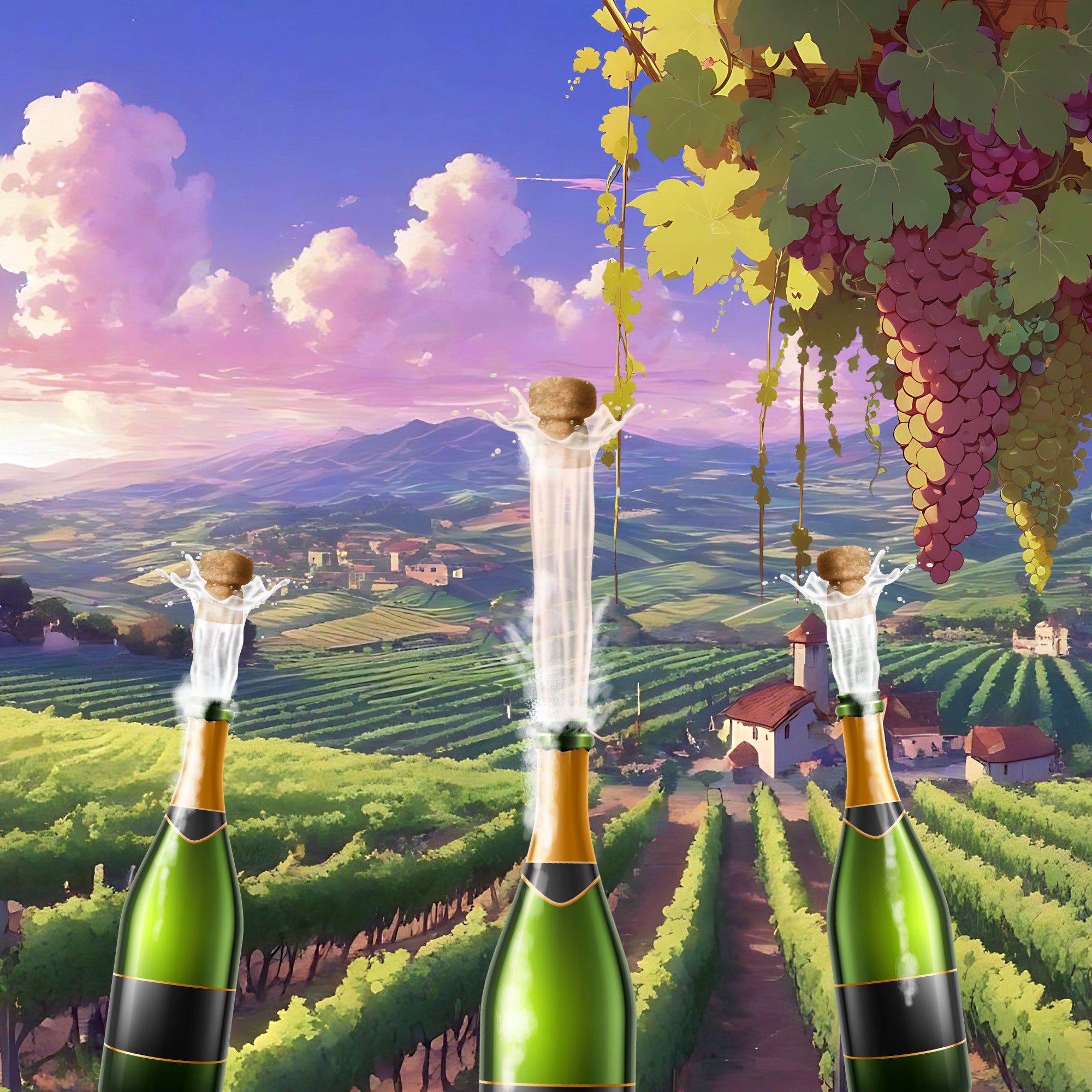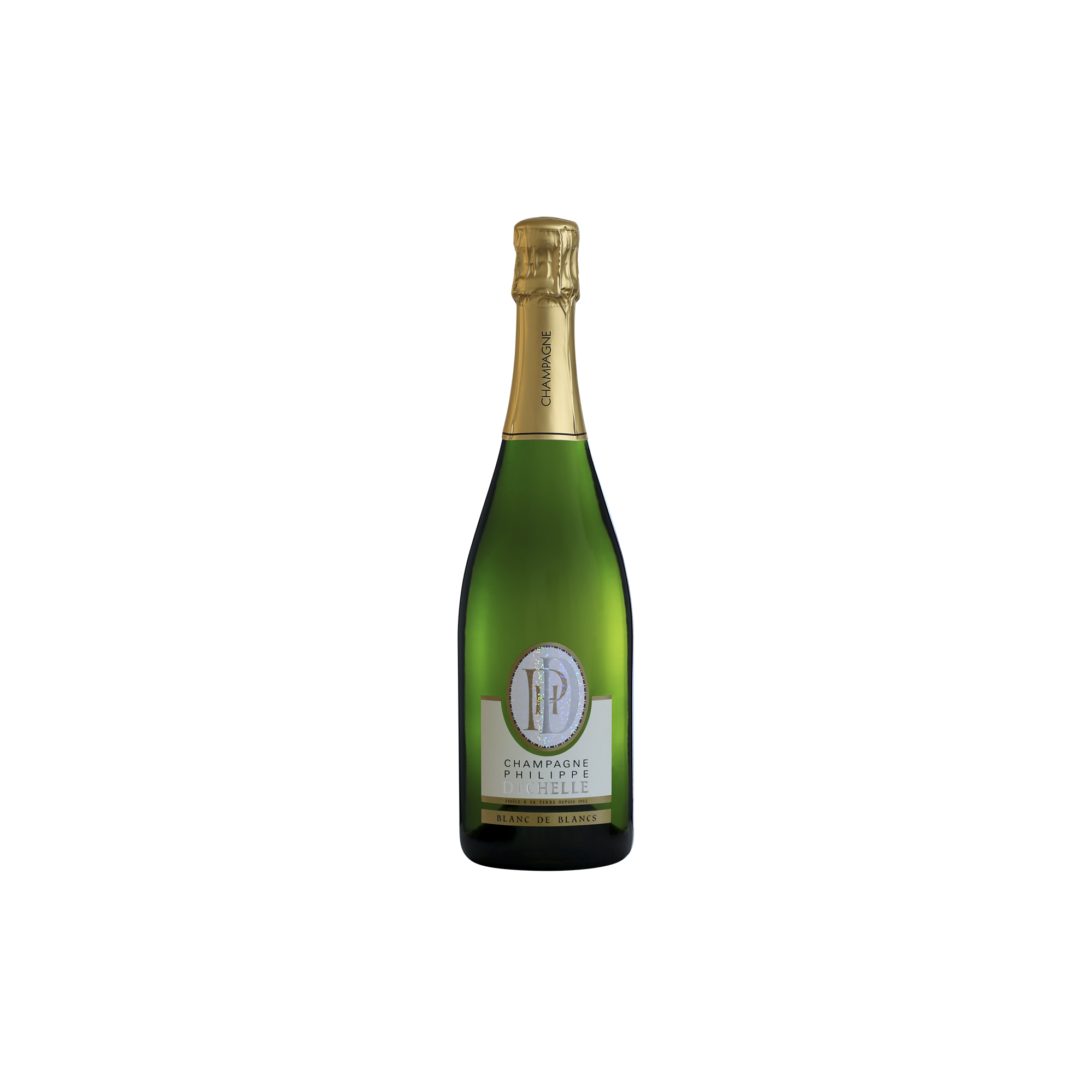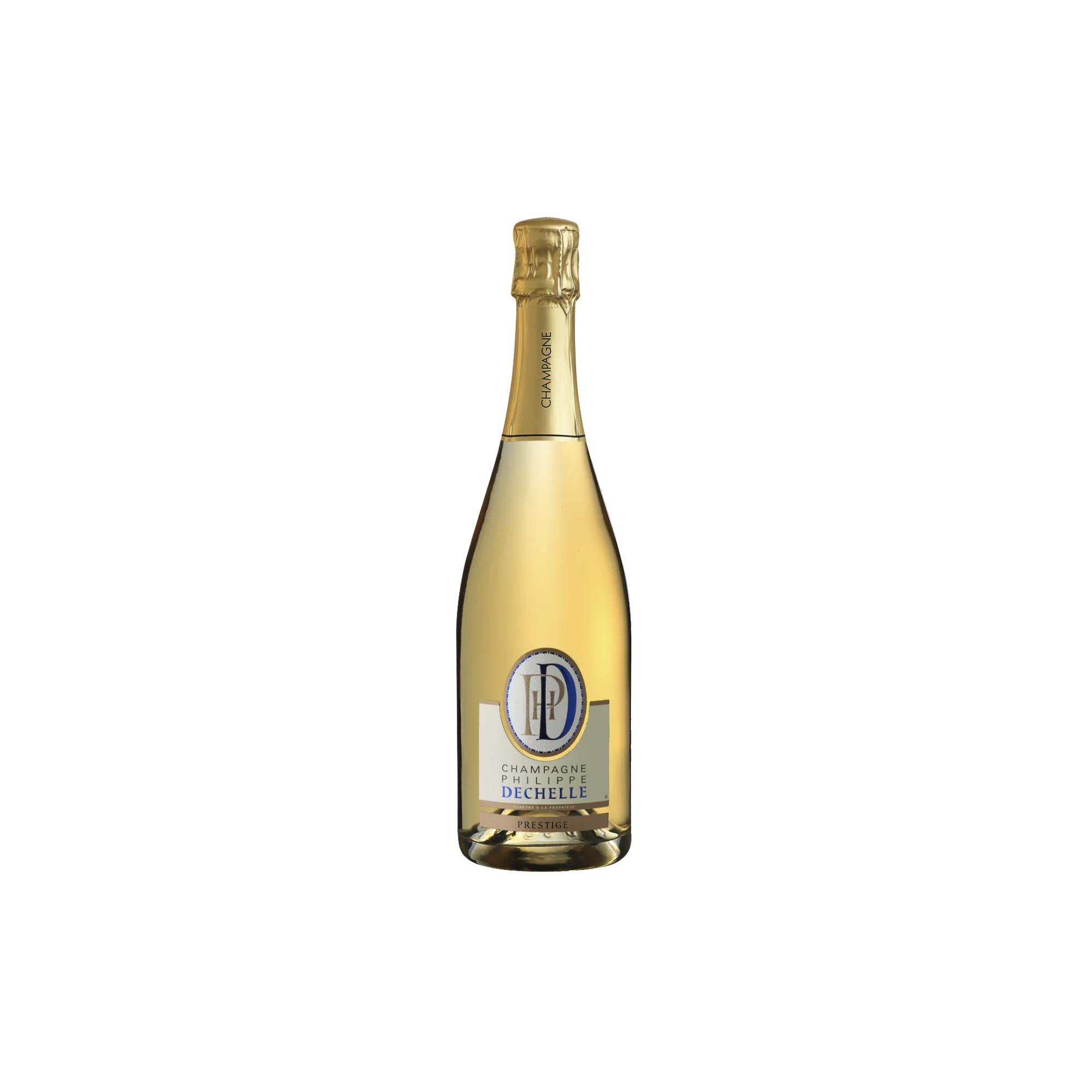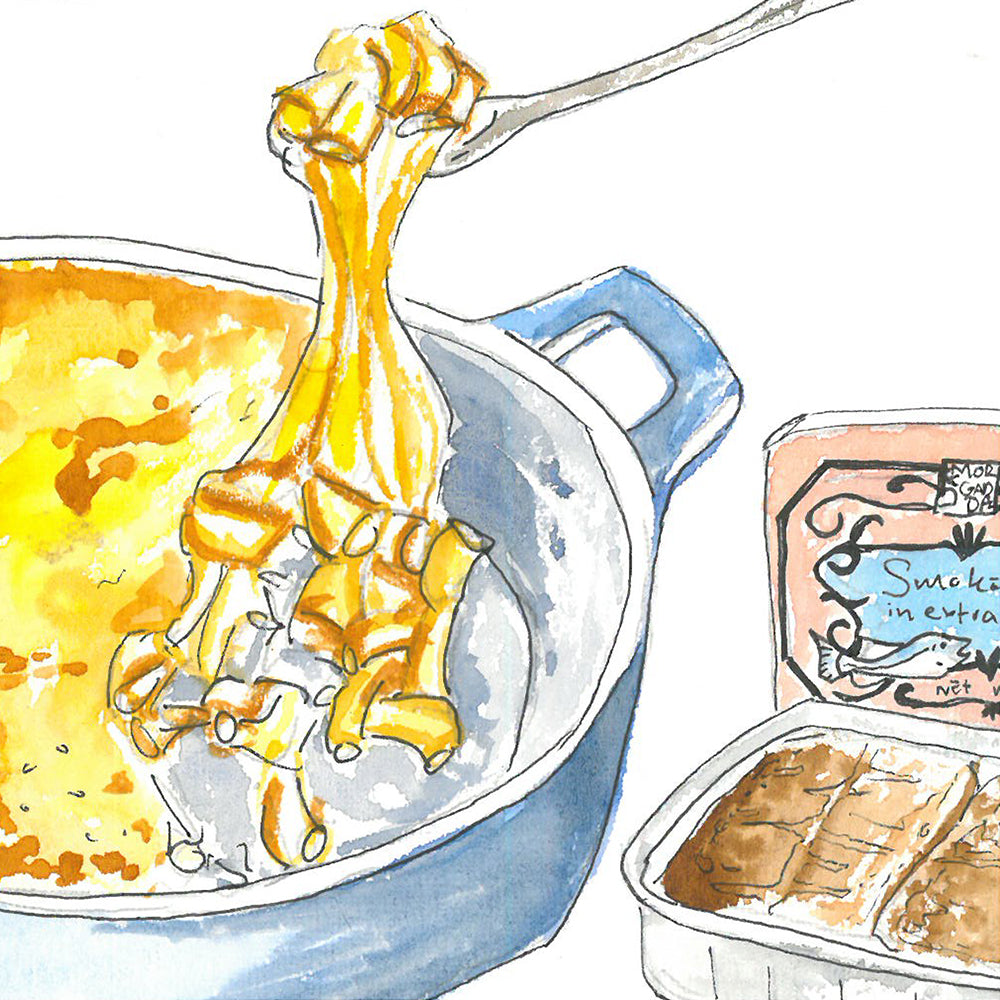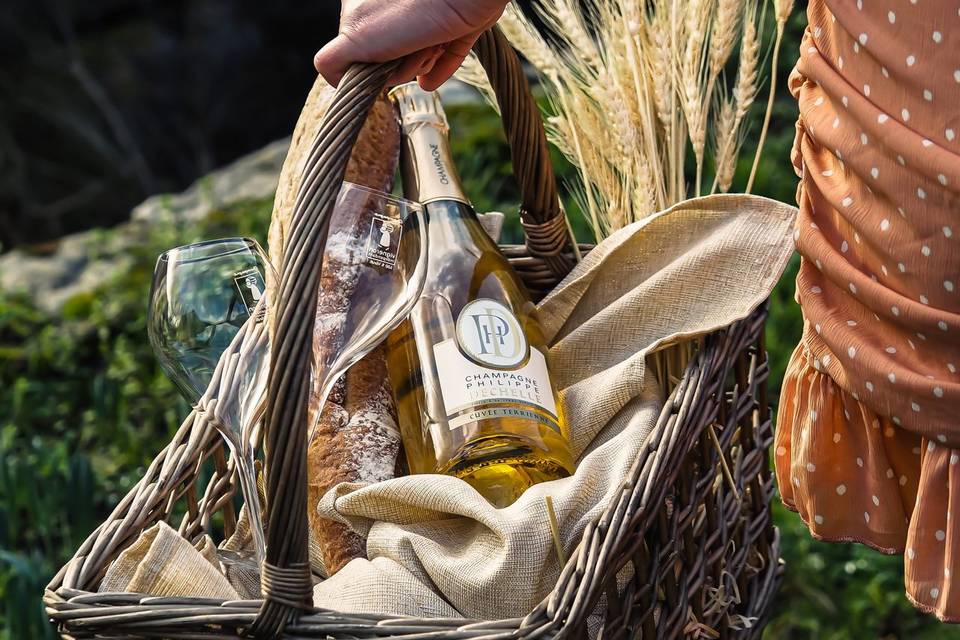Self-taught, with deep rooted familial connections to Champagne, Philippe Dechelle toiled for decades to perfect his craft. The ups and downs, moments of optimism and disappointment forged Phillipe Dechelle into a force to be reckoned with. His belief that if you can do without needles ingredients in your Champagne then do without may seem like common sense but for an artisan to trust in his terroir and abilities is rarer than you may think.
Philippe Dechelle had complete faith in the natural ingredients that made Champagne great centuries before, so today we’ll celebrate that faith and dig into the history, climate, terroir, and grape varieties that make for truly memorable Champagne.
The History of Champagne
The story of Champagne begins with the Gauls, a group of Celtic peoples who settled in mainland Europe during the Iron Age and onset of the Roman Empire. The Gauls occupied much of modern day France and across their lands existed smaller, self-governing tribes. One of these tribes was known as the Remi, who prior to the invasion of the Roman Empire into Gaul, allied with Julius Caesar, and cemented their partnership with the understanding that the Romans would supply the wine loving region with all the elixir they could care to drink so long as they didn’t produce their own; forceful takeover versus compliant inebriation; the choice the Reims made was fairly obvious.
The region became known for its bounty of flavourful wines supplied by the Empire and when the first King of the Franks was baptised in Reims Cathedral the momentous occasion was celebrated with their cheerful potions. The subsequent tradition of having each future King of the Franks baptised in the same cathedral and serving the same drinks bestowed the wines from Reims with the title of ‘the wine of kings and the king of the wines.’
The expansion of Reims thanks to accessible trade routes saw the arrival of religion, and with religion, studious monks. The name Dom Pierre Perignon is one synonymous with Champagne as the Benedictine monk, beleaguered by the exploding wines in his Abbey’s cellar, set about understanding the intricacies of wine and invertedly made artisanal leaps in the process. Dom Perignon in his pursuit of stopping the second fermentation that caused the Abbey’s bottles to explode stumbled upon the importance of pruning grapes to reduce yields but improve wine concentration, revolutionized the pressing of grapes to reduce their exposure to air, and discovered more gentle pressing techniques to minimise skin contact and the extraction of unwanted tannins. Perignon’s breakthroughs in viticulture and viniculture set the stage for future advancements in Champagne winemaking, including the addition of dark grapes varieties to the golden drink. But one of his greatest contributions came not from his understanding of viticulture but from the purchase of thicker glass bottles from England that would once and for all stop those unstable wines from exploding all over his pristine cellar!
The introduction of these robust glass bottles to the fermentation of Champagne was revolutionary. Now, instead of storing your base wine in wooden casks that were porous and might permit precious gasses to escape, thus ruining the hallmark fizz, the effervescent drink could be stored in thick glass bottles that ensured the second fermentation went off without a hitch.
It was during this time that Champagne connoisseurs, curious about fizzing concoctions started to experiment with sugar and Liqueur de Tirage (a combination of sugar, yeast, and alcohol) adding the ingredients to flat base wines in the hopes of achieving a secondary fermentation that would supercharge dormant potions giving them their fizz. The way in which artisans approached the production of sparkling wines at this time was through trial and error rather than the application of scientific theories that would later come to light thanks to Louis Pasteur who was the first to figure out that sugar converted yeast into alcohol and carbon dioxide, offering a blueprint for all those wanting to perfect their bubbling craft.
The distinction of Champagne wines as opposed to the plain title of French wines, as was the norm centuries ago, dates back to the seventeenth century. The desire and recognition of the regional drink was so pronounced that it wasn’t long before copycats started to produce their own sparkling alternatives and market them under the Champagne name. The producers in the Champagne region, outraged by the sheer audacity of those willing to hijack their regional identity, appealed to the Angers Court and requested that strict parameters be applied to the Champagne region and that clear borders be drawn up that would distinguish the region from its neighbouring towns and cities. The process of setting clear conditions for the use of the Champagne name would take decades and in the mid twentieth century it was decided by the French Ministry of Agriculture that only those wines exclusively sourced from and produced in the Champagne vineyard area could bear the name Champagne. The concept of controlled designation of origin (AOC) was introduced not long after and enshrined all the rules that constituted authentic Champagne.
The Climate and Terroir of Champagne
The climate of Champagne is fundamental to achieving its unique flavor. The vineyards in the Champagne region are subject to a dual climate that represents the extreme impact of both continental and oceanic influences. So pronounced and rare are the effects of these two climates that they are not found anywhere else in France.
The dual climates of Champagne exist in a kind of antagonistic relationship with one another whereby thanks to the oceanic influences the vineyards are benefactors of a mild temperature that is neither too cold in the winter nor too hot in the summer. The average annual temperature, thanks to the oceanic influences, remains steady at about 11 degrees Celsius. This mild, unproblematic climate offers artisans a dependable norm for their winemaking, as the mostly oceanic climate allows them to make hay (or wine) while the sun shines. But when we take into account the continental influence of the Champagne region that’s when things start to become a little bit more complicated.
The continental influence of the Champagne region is very much the polar opposite of its oceanic contemporary, in that this weather system can lead to freezing temperatures in the winter and soaring sun storms in the summer. The onset of these extreme weather fluctuations can of course be detrimental to the vine and wipe out entire harvests in one hearty gust. But it is also thanks to the antagonistic and complicated relationship of these oceanic and continental influences that Champagne production hits its stride. The emergence of glorious sun in the summer, bathing the vineyard in copious golden rays, encourages grape clusters to develop whilst the continuous rainfall, customary of oceanic climates, nourishes the vine and produces ideal conditions for the grapes to flourish.
This climate that prides itself on plentiful sun and the right amount of rain grants grapes the opportunity to achieve the perfect balance of acidity and sweetness that when procured in ideal quantities can produce the most sought after vintages. This antagonistic climate for the longest time has been blessing and a curse for Champagne artisans. But in recent years with the increasing impact of global warming, the curse component of this dual climate has been the predominant factor plaguing artisans minds.
This change in climate has of course been a nightmare brought to life for many Champagne producers, the extreme weather making for uncertain futures. But if ever there was an element of Champagne production that seasoned artisans could depend on for a restful night’s slumber it’s that of their regional terroir.
The terroir in the Champagne region has a colossal impact on the flavor profile of each yield. So much so that should someone take the same grape varieties and prepare them in the same manner as a Champagne producer anyplace else on the globe it is a foregone conclusion that their product will differ dramatically from the produce of the Champagne region. This is because millions of years ago when oceans covered every inch of land, sediments of rock were scattered across the seabed and built up to form substantial deposits that inform the soil of today. In Champagne the predominant rock type that covers the land is sedimentary limestone, composed of chalk, marl, and limestone proper. This soil profile is porous and promotes excellent drainage which keeps the roots of vines dry, ensuring the growth of health, flavourful grapes. This soil profile is also virtuous as the presence of chalk ensures that precious rain is retained within the soil and stored for times of drought, something that is incredibly valuable for a region renowned for its dual climate. The chalk acts as a reservoir and can store up to 400 litres per square meter, the arterial design of the rock regulating water consumption for the vines, ensuring the perfect balance of ripeness, acidity, and sweetness is achieved in every grape.
But what of the grapes and what grape varieties are the most sought after in Champagne?
Grape Varieties and Champagne Distinctions
The parameters surroundings Champagne grape varieties are as meticulous as those informing the drink itself. In the 1930’s it was decided that of the seven grape varieties grown in the region that three would be classified as Champagne approved whilst the remaining four - susceptible to disease - would be scratched from the record. The four grape types that did not make the cut - pinot blanc, pinot gris, petite meslier, and arbane - can still be found in some bottles thanks to something known as ‘grandfather’s rights,’ as vines that existed prior to the introduction of this embargo can still produce their grapes, but for the most part, and for the sake of ease, we will focus on the predominant grape types today that include: chardonnay, pinot meunier, and pinot noir.
Beginning with chardonnay, we are introduced to the grape variety that comprises a third of all plantings in Champagne. Chardonnay grapes appear golden green on the vine and are renowned for their delicate fragrance that is comprised of citrus, floral, and mineral rich notes. Chardonnay grapes flourish in clay soils, as the mineral rich clay and the marl mixed soil deepen the complexity of flavor and contribute a distinct acidity that enlivens the best Champagnes. Chardonnay is the preferred grape when producing vintage Champagnes as its renowned longevity ensures a plentiful shelf life and preservation of rich flavor. Should one be looking for crispness in their Champagnes chardonnay should be your first port of call.
This takes us then to pinot noir, which is one of the oldest grape varietals in France. Records indicate that the grape has been grown in the region since 1345, and this durability seems to have translated into popularity as pinot noir is the most widely planted variety in the Champagne region. The grape thrives in the north and south of the Champagne region in Montagne de Reims towards the top of Champagne and Cotes des Bar located at the bottom. The cherry red grape is called ‘précoce’ as it tends to ripen early, benefitting from the cool, chalky soil it calls home. The predominant flavor profile of pinot noir is that of red fruits and violet and rose. The varietal announces itself with a strong body, punch, and solid structure that punctuates Champagne.
The last varietal of the three main grape types in Champagne is that of pinot meunier. This varietal is the second most planted in the region and has only become more popular in recent years. The original role of pinot noir in Champagne making was an understated one, so understated that the varietal was used for blending the wine and was regularly left off the label altogether. Today though the varietal is cherished as its resistance to frost makes it a Champagne stalwart. Dependable and compatible pinot noir thrives in soils that contain more clay and can endure the harsher climates found in regions such as the Marne Valley. The varietal is a mutation of the pinot noir grape and adds a rotundness to Champagnes that sets itself apart on account of the fruity and yellow fruit aromas that perk up wonderful wines.
This leads us to the ultimate question then of Champagne varieties and what intriguing assortments a person can find when searching for the perfect fizz. In the world of Champagne, bottles range from prestige cuvee to vintage to non-vintage and the intricacies of these sapid drinks could fill an entire article on their own. But for the sake of remaining loyal to an introduction of Champagne we will start simple and focus on three varieties that directly draw upon the grape varieties discussed so far. These varieties are blanc de blancs, blanc de noirs, and rosé.
The name ‘blanc de blancs’ refers to wines where there are no black grape varieties. This means we need say goodbye to our pinot noirs and our pinot meuniers and wave hello to our forgotten friends, arbane, petit meslier, pinot blanc, and pinot gris. These bench warming grape varieties are included in the blend and inspire a lightness and finesse, their ebullient brightness awakening dormant taste buds and proudly representing the chalk dominant terroirs from where they hail. The flavor profile of blanc de blancs Champagnes is that of white flowers, think jasmine and honeysuckle, combined with the natural minerality of their terroir which balances acidity with salinity, elevating the citric elements whilst bolstering the creamier, more mellow flavor attributes that otherwise might be lost in the fizz of their sharper contemporaries.
The name ‘blanc de noirs,’ as some of you might have guessed refers to Champagne that is made using exclusively black grapes; which means goodbye chardonnay and hello pinot noir and pinot meunier. The black grapes during the pressing stage are handled with the utmost care to ensure the juice of the grape has minimal contact with the skin so to achieve the light colour of the Champagne. Blanc de noirs have a characteristically fuller body than their all white counterparts, as the density and roundness of their flavor profiles produce a Champagne that is reminiscent of red fruits, think strawberries, raspberries, and black fruits, blackberries and blueberries. The citric elements of these grapes are represented through the flavor of bursting orange and mandarin. Blanc de noirs Champagnes have a great potential for ageing and can even develop notes of coffee and cocoa in their older years. For anyone looking for complexity and heart in their Champagne, blanc de noirs are the way to go.
That brings us to the final introductory varietal we’ll explore today; Rosé.
Rosé is renowned for its elegant shade of enticing pink that captures the eye regardless of where it appears. The Champagne that looks like a work of art can actually be produced in just two days and in the case of the blending method chosen white wines are combined with around one fifth the amount of red wine to attain the darker hue. Macerated Rosés are the product of grape juice resting or macerating in black skins for up to thirty six hours; the longer that one leaves grape juice in contact with the darker skins, the more colour the Rosé will take on. Saignée Rosés are those Champagnes that come into contact with black skins for less time than Macerated Rosés and in turn take on a less pronounced colour. These Rosé Champagnes can range from a soft pink to a full bodied hue of reddish pink and possess notes of citric freshness whilst remaining smooth and structured. Rosé given the opportunity to age can take on more spiced attributes and display toasted notes accompanied with dried fruits. This artisanal expression of taste is perfect for those looking to achieve the best of both worlds; fresh and bold in a single bottle.
Conclusion
In the effervescent world of Champagne, Philippe Dechelle's dedication reflects the refined artistry that defines this sparkling elixir. From the historical alliance of Gauls and Romans to Dom Perignon's transformative innovations, Champagne's journey is one of resilience and elegance. The dual climate of Champagne, blending continental and oceanic influences, yields grapes of unparalleled balance and flavor.
The road to excellence for Phillipe Dechelle has been a winding one, but with every step taken, their unwavering dedication and mastery transform Champagne into a sublime art—a timeless fusion of tenacity, grace, and the sparkling allure that defines luxury.
